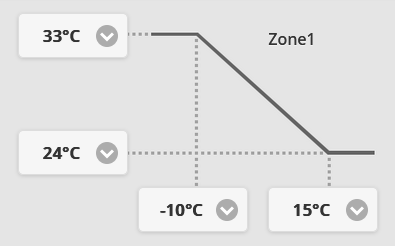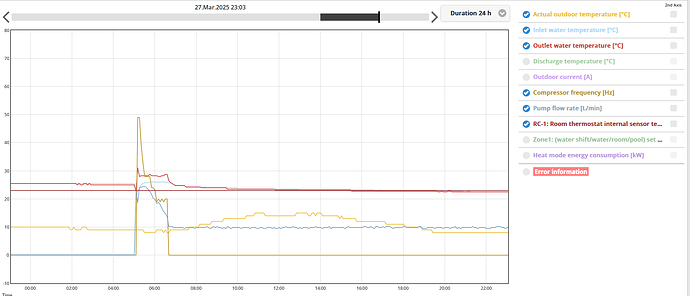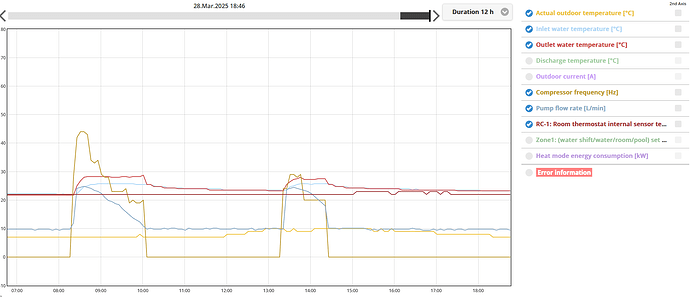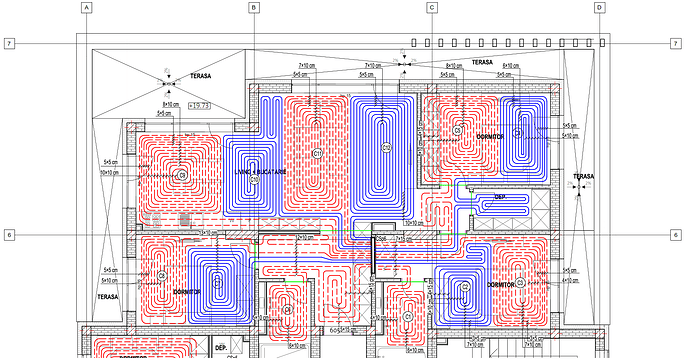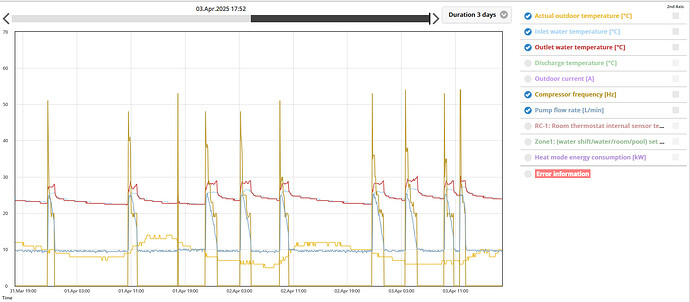Hello,
Since November I’ve been living in a 100mp apartment that has a panasonic aquarea WH-UD-09JE5-1 split heat pump. I’ve tried to configure it properly and have a few concerns. I’ve asked the installer for help, but he doesn’t seem to know much or is not interested to explain. No matter what I say he says everything is fine with very little explanations. I’ve also tried to contact panasonic on multiple emails, but nobody answers.
My objective is to keep the temperature around 22 degrees.
I should start by mentioning that the room thermostat was off by around 2 degrees and that the installer told me to put this on -2. But I’ve found in the manual that this says EACH sensor. Could this influence all temperatures in the system?

Also, there is no buffer and no other extra circulation pump, beside the internal one.
The HP thermostat doesn’t seem to influence the logic much. For example, if I set it to 23 degrees, the temperature in the room where the thermostat is will be anywhere between 22.25 and 23.75. From what I’ve read the thermostat is not very important and it’s the compensation curve that dictates most of the logic.
Recently I’ve gained access to the aquarea installer app and I can see all the charts and play with the settings much easier. I’ve watched many videos and read many posts, but I still can’t figure everything out. Unfortunately, I can’t find much about panasonic as it doesn’t seem to be very popular.
I’ve played with the heat curve and this is what I have for the past 3 days. Unfortunately, it’s not winter anymore here, so I can’t test below 0.
The temp is anywhere between 22.5 and 23.5. Thermostat still set at 23. I assume I need to decrease the lower temp from 24 to 23 or 22.
Delta T is 5, but the charts show the difference to always be between 2 and 3 degrees. Here are the charts for yesterday and today
The room sensor config is set to Internal Thermostat, meaning the HP thermostat in the room. Should I set this to water temperature, meaning the HP flow temperature?
The flow pump is set to run based on delta T. The other option is maximum duty. The maximum duty selector on the right is available for both options. I reduced this once hoping to get a better delta T, but it didn’t seem to make any difference. Should i reduce it more?
I also don’t understand why the circulation pump is always on as you can see in the charts above (darker blue line). It ramps up when the HP is on, then goes to around 10 when the HP is off.
When should the HP turn on? When the inlet temp is below the temp on the compensation curve for a certain amount of time?
When should it turn off? When the inlet temp is above the temp on the compensation curve for a certain amount of time?
Do you think a buffer is required for the system? The manual says “Using a Buffer tank is the ideal installation design. This allows the setup of a heat pump and heating circuit to operate at their optimum level of performance and efficiency. The buffer tank also provides open water volume between heat pump and heating circuit, which also helps reduce the stop/start cycles of the compressor. Where underfloor is connected, the volume stored allows a quicker response time. Stored volume also allows more efficient defrost cycles, without the need for direct electric backup support to be activated”, but I’ve seen opinions on this, both pro and contra, so I’m not sure anymore.
In case it helps, here are the service manual and the installation manual:
Thank you
